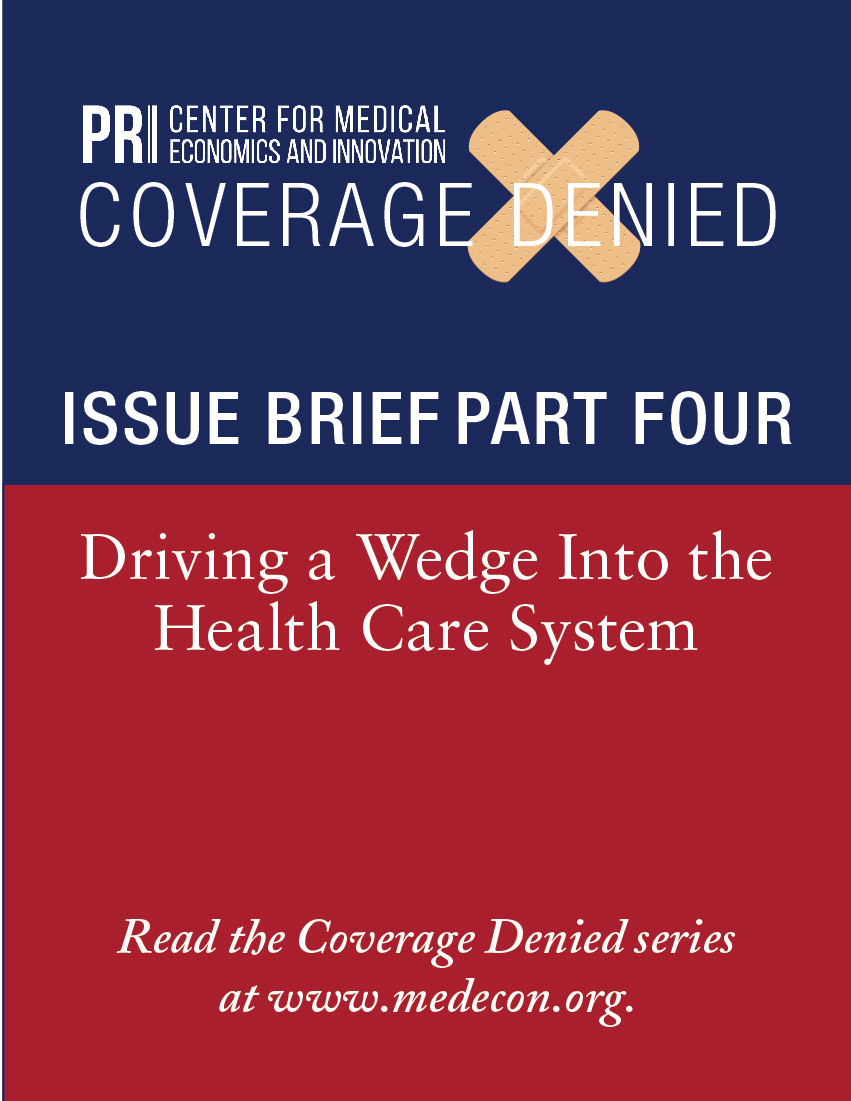America’s broken third-party healthcare payment system prioritizes government and insurance companies as the largest payers, leaving patients with higher out-of-pocket costs, greater exposure to healthcare financial risk, and reduced access to care – finds the latest paper in the Coverage Denied series released today by the Center for Medical Economics and Innovation at the nonpartisan Pacific Research Institute.
“The healthcare marketplace should prioritize the needs of patients, but our broken third-party payment system caters to insurers and government as the largest payers of care,” said Dr. Wayne Winegarden, director of PRI’s Center for Medical Economics and Innovation and the series author. “As a result, government and insurance companies are exerting greater control over how healthcare dollars are being spent – and this means higher out-of-pocket costs and greater financial risk for patients, reduced quality care, and less healthcare access.”
The Coverage Denied series documents how the third-party payment system has effectively turned insurance companies or government – as the largest healthcare payers – into gatekeepers. According to data from the Centers for Medicare and Medicaid Services, government now represents over 50 percent of all healthcare spending as a third-party payer.
Increasingly, government and insurance companies are restricting access to care or medication, while imposing greater financial burdens on the backs of patients. Average U.S. health care denial rates have climbed to between 6 and 13 percent.
In “Driving a Wedge Into the Healthcare System,” Winegarden documents that what patients buy today is essentially pre-paid healthcare, not effective insurance managing the financial risks of patients. Government and insurance companies are prioritizing payments for things like preventive care, regardless of whether patients utilize these services.
Insurers pay one-third of healthcare consumption costs, which includes premiums paid by patients and employers. Patients pay the government’s health care costs when paying taxes.
With government and insurance companies as payers, there is no incentive to compete or efficiently provide care at lower costs. This has resulted in rising healthcare costs that are increasingly being passed onto patients by third-party payers – leading to higher premiums, less coverage, increased financial risk, and reduced access to care.
This has contributed to an $81 billion medical debt crisis – $2400 on average – even though the number of uninsured has dropped by 40 percent since 2010. Households with private insurance pay more than $18,500 annually for healthcare, which is 27 percent of the median household income.
“The latest findings in the Coverage Denied series show that reforms to fix the misaligned incentives in the current broken system are essential to ensuring patients receive what they thought they were getting when buying a policy – insurance from major healthcare financial risks,” said Winegarden.

